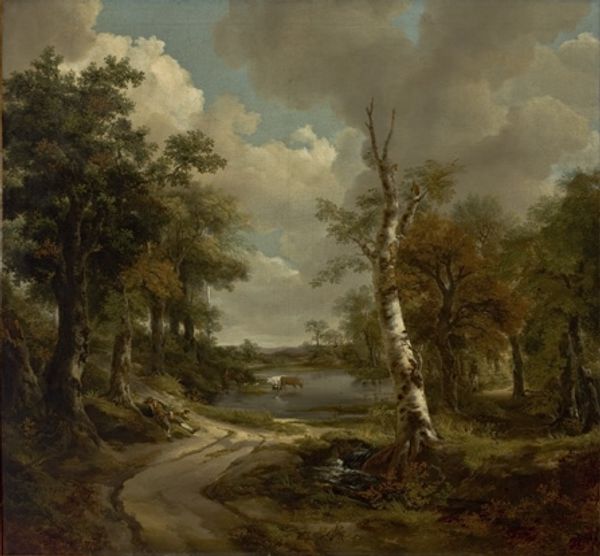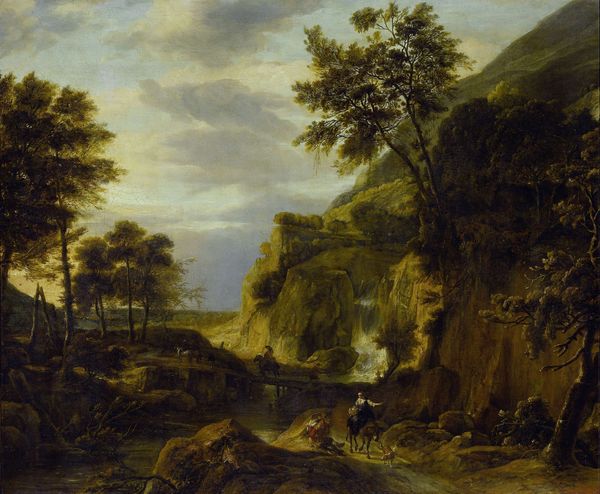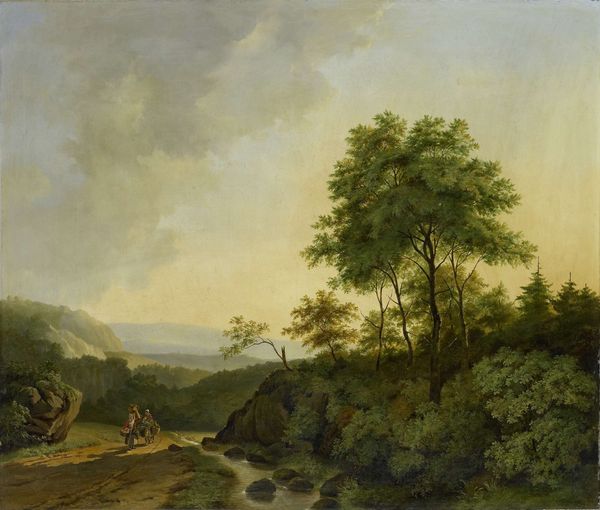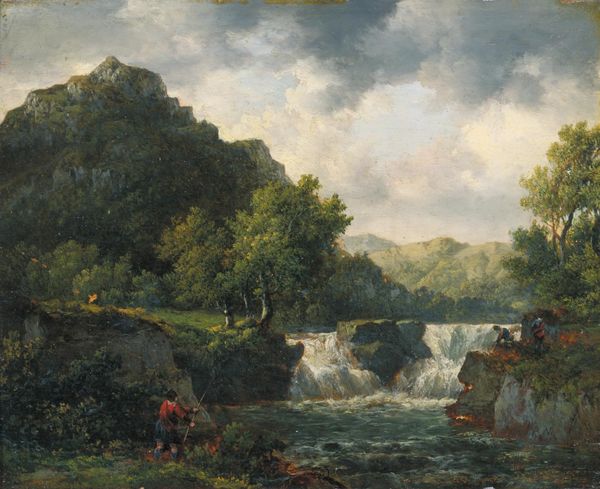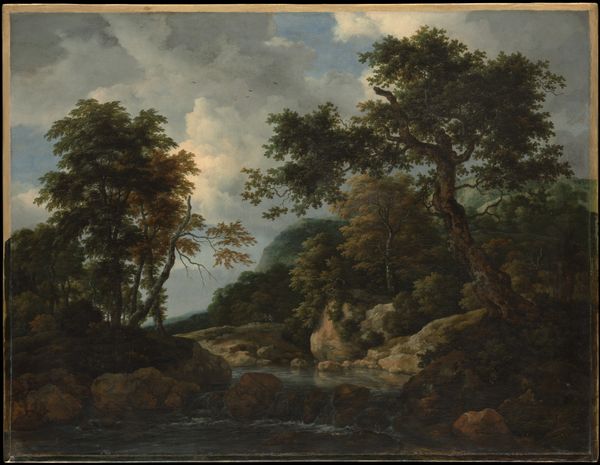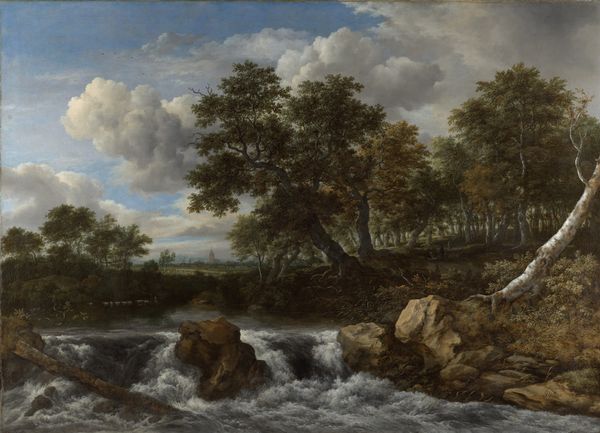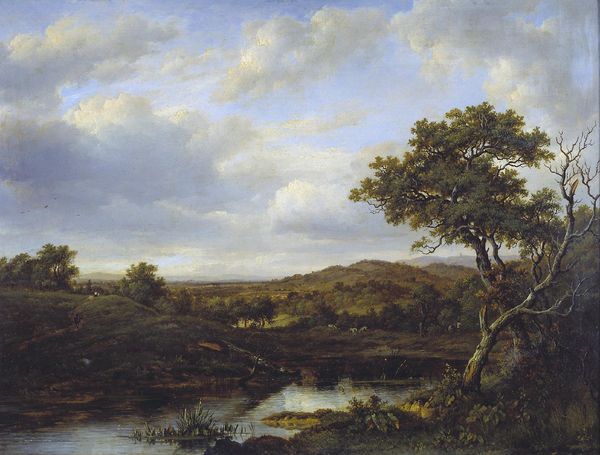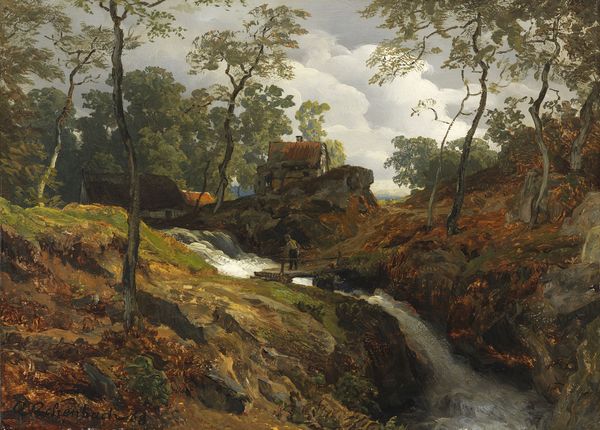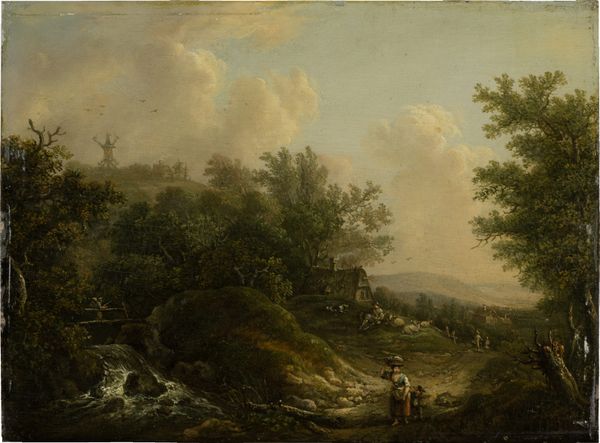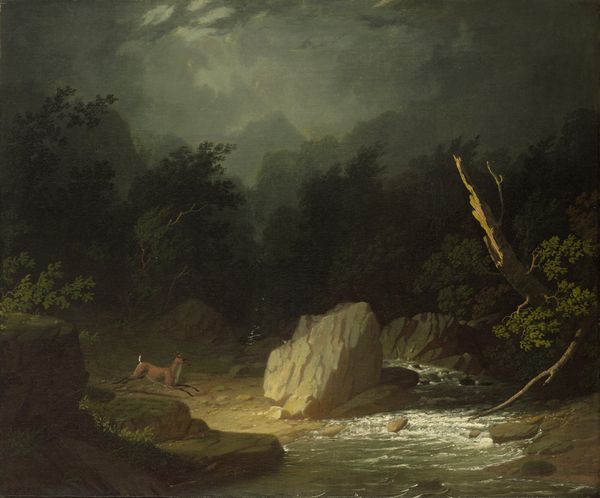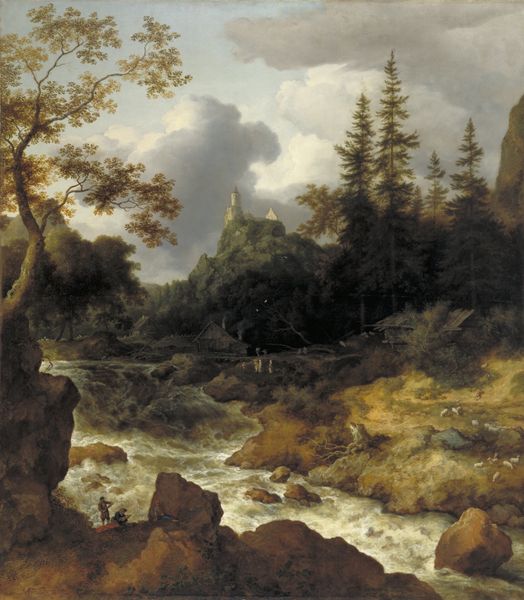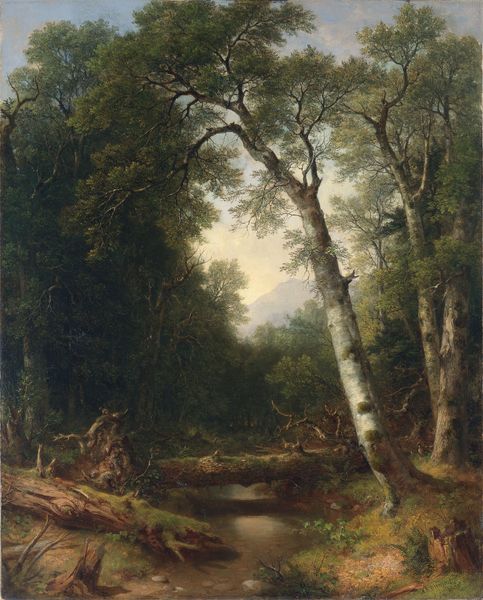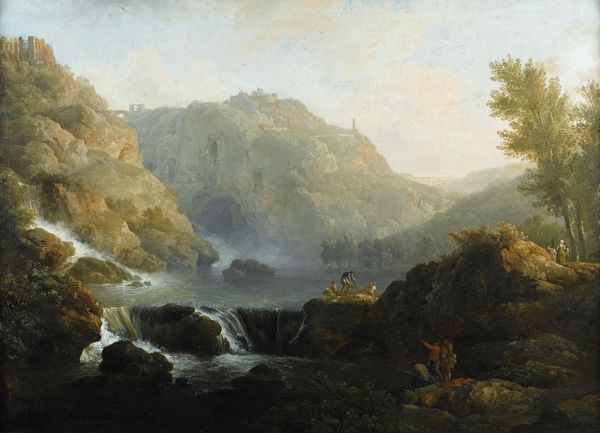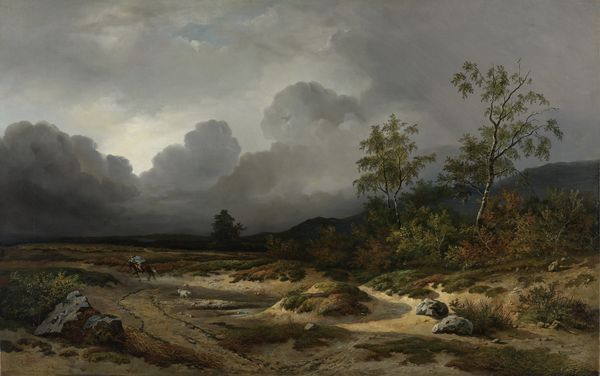
painting, plein-air, oil-paint
#
baroque
#
painting
#
plein-air
#
oil-paint
#
landscape
#
waterfall
#
oil painting
#
forest
#
underpainting
#
painting painterly
#
14_17th-century
Dimensions: 56.0 x 66.8 cm
Copyright: Public Domain
Jacob van Ruisdael painted this wooded landscape with oil on canvas in the Netherlands, sometime in the mid-17th century. Ruisdael specialized in such scenes, and this one exemplifies the cultural values they embodied. During the Dutch Golden Age, landscape painting became a dominant genre. It reflected a growing sense of national identity and pride in the Dutch countryside, as well as the rise of a wealthy merchant class who commissioned such works for their homes. This painting, with its dramatic sky, rushing water, and humble cottage, evokes both the power of nature and the comfortable domesticity that the Dutch had come to enjoy. But notice how the cottage is dwarfed by the trees. Is this a nod towards older ideas about the sublime? Or a comment on the role of humankind in taming nature? By studying the social and economic history of the Dutch Golden Age, and by looking at the writings of the time, we can gain a deeper understanding of the cultural significance of landscape painting and its role in shaping Dutch national identity.
Comments
stadelmuseum about 2 years ago
⋮
Dark clouds push their way in front of the sun; the wind blows in fits and starts. Peasants seek refuge in their huts. The sense of restlessness has also infected the brook pouring over the rocks in a small foaming waterfall at the lower edge of the scene. Even the chapped tree trunks seem to quake with apprehension. The rising storm is almost palpable. Every one of Jacob van Ruisdael’s brushstrokes is instilled with the change in the weather. It is not least of all for that quality that he is considered the most innovative landscape painter of the Dutch ‘Golden Age’.
Join the conversation
Join millions of artists and users on Artera today and experience the ultimate creative platform.
